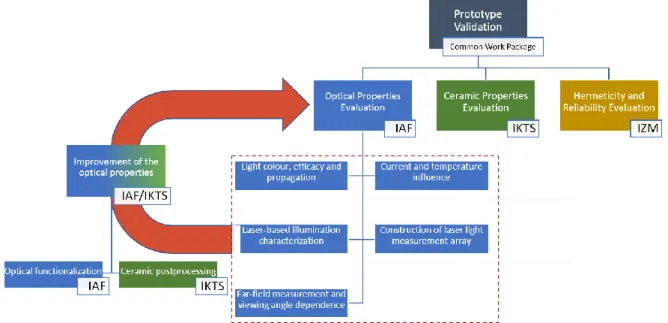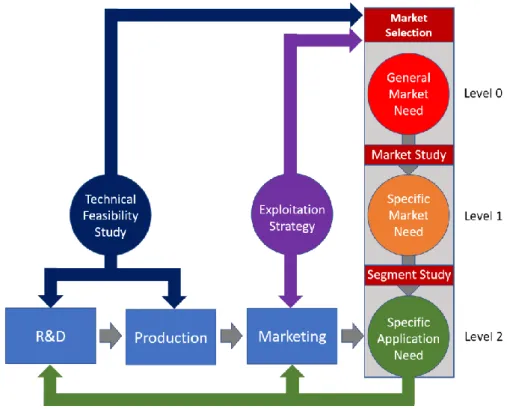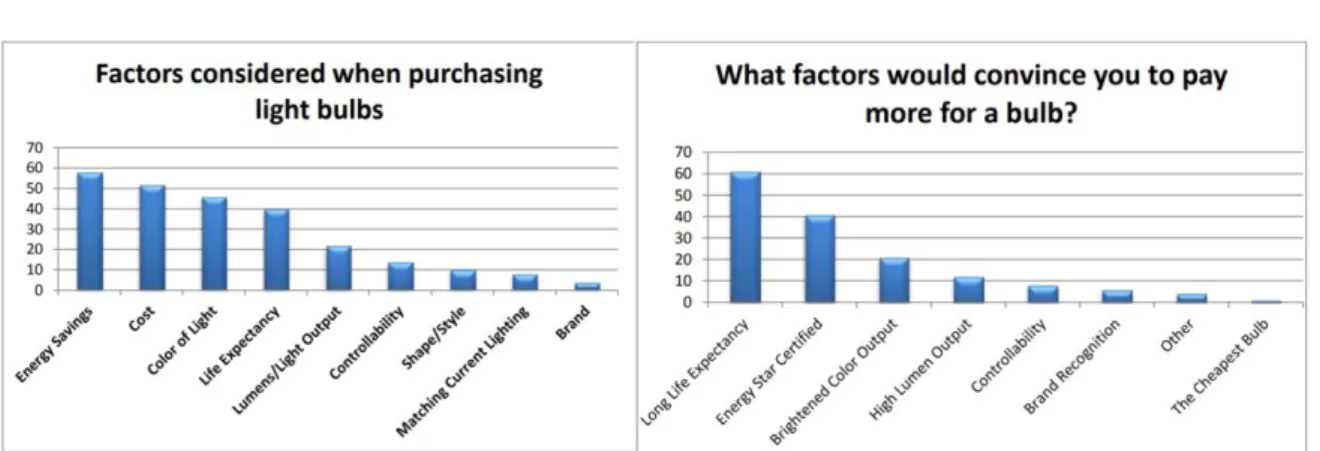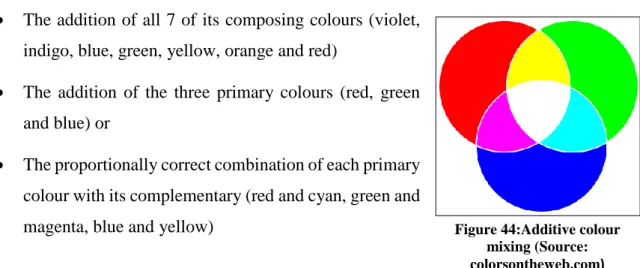The content of this thesis/dissertation, together with its results, is the property of the Hellenic Open University and its author, each of whom has the sole and exclusive right to use, reproduce and publish it (in whole or in part) for educational or research purposes, with the obligation to refer to the title of the thesis, the name of the author and to the Hellenic Open University where the thesis/dissertation was written. After confirming feasibility, the result is weighted based on the actual demand of that SSL market segment, taking into account the features and prices of relevant LED solutions currently available to consumers.
Introduction
Finally, the main types of different LEDs will be mentioned, especially elaborating on the new hermetic LED approach and its benefits. Finally, the results will be compared to the price trends of traditional, polymer-based, non-hermetic LEDs.
Motivation
- The advance of Solid State Lighting
- Consumer and industrial LED applications
- General illumination
- Automotive solutions
- Sensor applications
- Horticultural and medical sectors
- General technology and market insights
- The hermetic, full-ceramic, high-power LED approach
- LED working principle
- LED terminology
- The advantage of hermeticity in LEDs
The second, relevant to the scope of this thesis, is the “down-converting” of the high-energy, short-wavelength light (blue or UV) from an LED “pump” chip via a phenomenon called photoluminescence, by built-in phosphor material. in the LED package. However, this leads to a temperature increase of the housing due to the poor thermal conductivity of polymers, which then leads to the thermal and electrical degradation of the module.

Technical Feasibility Study
Insight on feasibility studies
Definition of Requirements
Development of ceramics with different colors, also suitable for UV excitation. Valuable insight into the sequential TFS process can therefore be gained by examining the requirements presented above. The need for hermeticity, the abandonment of polymers and cooling efficiency (points a. and b.) predict the ideal package materials, while the prerequisite of light conversion efficiency and the potential of ceramics for different light colors (points c. and e. ) indicate the optimal cap material.
Material Technology Research
- LED package components
- Material selection requirements
- Interposer material
- Spacer material
- Hermetic phosphor cap material
- The LED pump chip
- Material compatibility
- Material Research phase evaluation
To obtain a list of the optimal materials for the proposed approach, a set of requirements must be taken into account, with the final decision based not only on their physical properties, but also on their availability and price. The surface detail of aluminum nitride and one of the plates used can be seen in Figure 10. Most importantly, the LED chip must be compatible with the selected ceramic phosphor; the dominant wavelength emitted by the chip must match the excitation band of the phosphor, to optimally "pump" the phosphor without loss of efficiency.
As in the case of the aforementioned polycrystalline YAG:Ce ceramic, increased material costs could potentially affect the overall cost and consequently the competitive price of the final product. Even in the case of hermeticity, the reduction of thermal fatigue is crucial, as even minor cracks can jeopardize the hermetic seal. As such, the second TFS process was successfully completed, leading to the process planning phase, which will be described in more detail in the next subsection.

Process Design
- Insight on engineering design processes
- Approach Presentation
- Material Cost Analysis
- Work Effort Cost Analysis
- Approach cost comparison
- Process Design phase evaluation
The cost comparison of the above processes will be presented during the following paragraphs, following the material costs and work efforts of the fully hermetic approach by the IAF. For material cost analysis purposes, two different results will be calculated based on the target production number. Another significant part of the total cost of this approach is related to the labor effort required to produce such devices.
7 The engraving of geometric, scattering-inducing structures on the surface of the ceramic phosphor via laser ablation. To conclude, the material and labor cost analysis provided a preliminary insight into the final cost of the proposed product, highlighting the new materials or processes that the all-ceramic approach incorporates. After recalculating the cost estimates from the all-ceramic approach to accommodate the proposed target volumes, the results were then collated and mapped onto the same diagram, for easy comparison.

Prototyping
- Fabrication and validation of prototypes
- Prototyping phase evaluation
Therefore, the third process of the TFS has been successfully completed, leading to the fourth and final prototyping stage which will be elaborated in the next chapter. Details on the Work Breakdown Structure (WBS) of the prototyping stage can be seen in figure 25. According to the initial planning, the prototype validation stage requires evaluation of the optical, ceramic and hermetic aspects of the product, each assigned by one project partner.
Whenever a step produces results that do not meet the optical requirements set at the beginning of the project (namely b. and c. mentioned in 3.2), the main process continues and the side process “improvement of the optical properties”. The purpose of this final phase is to validate the prototype LED modules based on the findings of the previous process. At least one of the process chains (the one found in Fraunhofer IAF's all-ceramic LED approach) delivered consistently working, hermetic LED devices.

Competitor analysis
Insight on competitor analysis processes
Additionally, based on optimal functionalization, the angular color uniformity can exceed that of commercial LEDs currently on the market (Passow et al., 2017). The suggested method can be applied to a wafer-level packaging process that can support 4-inch wafers, based on the successful production of homogeneous phosphor ceramic wafers of the same size. The framework of choice for this analysis was chosen to be the last in the list above, namely the Five Forces model.
Porter and published in 1980, it elaborates on the forces that determine the intensity of competition, and consequently an industry's attractiveness and profitability, and reveals characteristics suitable for exploitation (Porter, 1998). The selection was based on the method's advantage of providing a holistic view of a market sector and an overview of the market position strengths, rather than a detailed business analysis of a few competitors (Hanlon, 2016). The competitor analysis carried out for the requirements of this work is structured as follows: the competitive environment will initially be interpreted through Porter's five forces method.
Evaluation of the LED competitive environment
- Market definition and target customer
- Framework introduction
- The rivalry among existing competitors
- The bargaining power of buyers
- The threat of substitute products
- The bargaining power of suppliers
- The threat of new entrants
- Framework results and discussion
Each of the top three companies originates from a different continent (Nichia in Japan, Osram in Germany and Lumileds in the US) and each prioritizes different product attributes. Considering the value of the general lighting market (including all lighting technologies), which is expected to be €75.6 billion in 2018, the above segments account for 21.3% or €16.1 billion. In addition, the light output was severely hampered by the limited optical aperture and placement of the LED chip inside the package.
However, the most prominent barriers to entry in the LED industry occur naturally, due to the type and environment of the business. One of the most distinguishing characteristics of the LED industry is the barriers due to intellectual property issues. The proposed strategies are elaborated with the help of the competitive advantage framework presented in the next subsection.

Exploitation Strategy
- The Generic Strategies approach
- Confronting the force of competitors
- Confronting the force of buyers and substitute products
- Exploitation strategy summary
The framework's findings highlight the areas that the product exploitation strategy should focus on. Therefore, one of the focus strategies should be selected because the results of the TFS show that production can be scaled up to reduce costs, and the market research has shown the advantages of the product over the competition. Further action plans in the context of the focus strategy are presented below.
One of the most efficient methods of penetrating saturated markets is the formation of strategic partnerships. These include identifying the ideal lead customer (by assessing their prospects, skills and profit potential), understanding the values of the primary customer (an elaborate process, as customers often do not know what they need), allocating resources ( including the correct business model), and adopting an interactive control process (Simons, 2014). Based on the characteristics of the proposed product and the dynamics of the relevant market, it was shown that a focus strategy would be more appropriate and effective to reduce the high power of competition rivalry, as well as the moderate power of the buyer and substitute product.

Market selection
Introduction to market pull
As such, the main processes are shaped not only by the results of the TFS and the exploitation strategy (as seen in Chapters 3.3 and 4.3), but also by the requirements of the market selection process. The complete pull approach combining the main aspects presented throughout the scope of this work can be seen in Figure 39. The advantage of incorporating such a multi-level approach relies on its result (level 2) revealing the ideal narrow market appeal, suitable for a focus-driven strategy, while its progress phases (levels 1 and 0) can identify specific and general market appeals in the event that a new product line is introduced in the future.

Ideal market identification
- The general lighting market need
- Market segments with specific lighting requirements
- The automotive lighting industry
- The horticulture lighting industry
- The medical lighting industry
- Specific application within the target market – Videoscopes
In conclusion, consumers in the general lighting industry are expected to appreciate the superior properties of the proposed approach, but their strong price sensitivity should not be overlooked. Insight into a specific market move was gained through the interaction of project partners with industry representatives before and during the product development cycle. SSL applications have steadily penetrated the automotive lighting industry in recent years due to the advantages of the technology, as mentioned in section 2.2.2.
According to reports, the combined market scale of the LED specialty market was estimated at $4.36 billion in 2016, with $612 million attributed to the medical market and an expected growth rate of 30% through 2020 (LEDINSIDE, 2016). Therefore, research is focused on implementing all the necessary components in the tip of the endoscope (videoscope), which increases image quality and robustness. To conclude, the medical videoscope segment is seen as the ideal target market for a focus strategy based on the economic forecast and sector size as well as application compatibility with the features of the proposed approach.

Market Approach Summary
This work concludes with an overview of the presented aspects of the project in the final chapter that follows.
Conclusions and future perspective
Available at: http://www.tradeready.ca/2014/fittskills-refresher/8-reasons-forming-strategic-global-business-alliances/ [Accessed March 19. Available at: https://www.ge.com /reports/say-vaarwel-say-hello-ge-stops-making-cfls-says-go-go-go-to-leds/ [Accessed January 31. Available at: http://www.ledsmagazine.com/articles /2011/03/leds-play-an-increaingly-vitale-role-in-life-science-applications.html [Accessed January 31, 2011.
Available at: https://www.sagentia.com/case-study/brandon-medical-breakthrough-high-definition-led-medical-lighting/ [Accessed 2 Apr. Available at: https://www.linkedin.com /pulse/importance-requirement-gathering-project- management-gagan-sahoo-pmp/ [Accessed February 18. Available at: https://www.greentechmedia.com/articles/read/the-inevitable-switch-to-led - lighting#gs.vItjkCo [Accessed 31 Mar.
